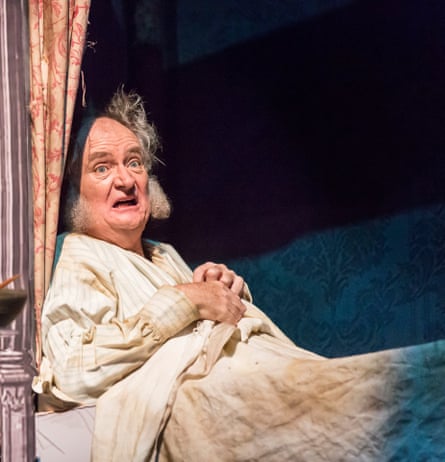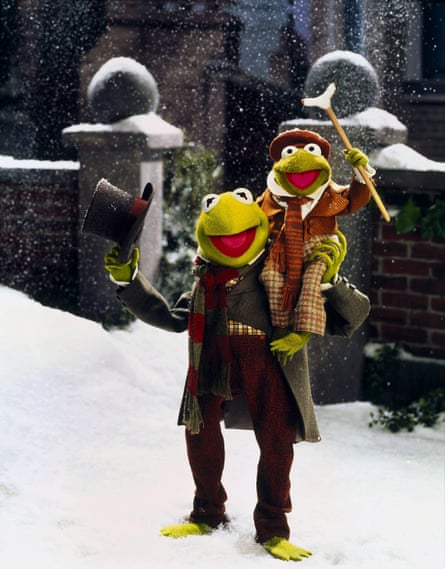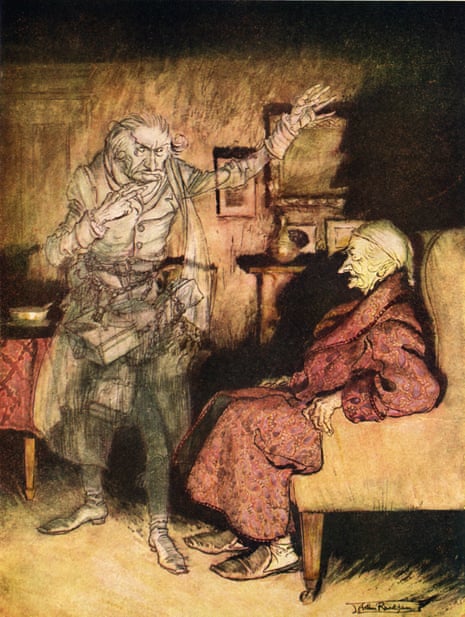A Christmas Carol takes the form of a dark journey of the soul from wilfulness, selfishness, and miserliness towards redemption, generosity and happiness. The figure of Scrooge is initially presented as a man locked into unhappy solitude and petty cruelty, someone whose ungiving, unyielding and resolute nature causes him no joy, but rather a grim satisfaction at having power over others, a power which he will wield in the darkest days of winter with particular determination, a power which goes against the very idea of what became known as the Christmas spirit.
This idea of Christmas, which the story itself did much to popularise, was already being preached about and written about in newspaper editorials when A Christmas Carol appeared in 1843. Christmas, in its new manifestation, would include the idea of giving as well as receiving, of looking after the less fortunate as well as eating well and spending time in good company.
For this reinvention of a tradition to become even more popular, an image was needed of a man who deliberately excluded himself from the cheer and the cosiness that the tradition, in all its fragility, implied. In the story, this man would be taken through a personal purgatory in order to emerge purified. He would see many things that would horrify him or make him feel guilty and unloved, all the more to make the communal cheer of Christmas seem relished by those who had begun to enjoy it. The story takes pleasure in the nightmares Scrooge must witness; these horrifying visions, the details of their descriptions, have richer textures than the subsequent images of Scrooge as a man who has learned his lesson and who has resolved to change his life.
Part of the power of the book comes from the grim, unearthly picture it draws of London. Since London was a collection of villages in which anyone moving from a posh square to an important public building could catch a glimpse down the many side streets that housed the poor, in which privileged and pauper passed each other daily, then the novel itself gained nourishment from the friction between classes, from the closeness of the little streets to the great. In the later 19th century, a number of writers saw the startling possibilities such contrasts offered, where the London of Dickens, so sprawling, vast, and filled with drama, could be rendered as a ghostly place where substance became shadow.

In books such as Robert Louis Stevenson’s Strange Case of Dr Jekyll and Mr Hyde (1886) or Oscar Wilde’s The Picture of Dorian Gray (1891), London could become a place of secrets, a city in which many people, otherwise normal and sane, could change their form as they moved from street to street, or from drawing room to attic.
Henry James would set his novel of 19th-century terrorism in this London. The Princess Casamassima (1886) “proceeded quite directly,” he wrote, “during the first year of a long residence in London, from the habit of walking the streets. I walked a great deal – for exercise, for amusement, for acquisition, and above all I always walked home at evening’s end, when the evening had been spent elsewhere, as happened more often than not.”
Dickens, too, told a friend that he had composed A Christmas Carol in his head as he walked about “the black streets of London, fifteen and twenty miles, many a night when all the sober folks had gone to bed”. The images that came to him then were of spirits and phantoms, aspects of a dream city in which nothing remained stable – least of all the past, the present or the future, which live like unearthly protagonists in the story Dickens created. The London he made in A Christmas Carol is as much haunted by its citizens as inhabited by them.
Dickens takes Scrooge on a journey in which time and space have no solidity, through a London of the imagination, using fictional registers that would have immense influence on ways in which Christmas is celebrated to this day.
When Scrooge looks out of the window he sees the air “filled with phantoms, wandering hither and thither in restless haste, and moaning as they went”. The Ghost who propels Scrooge is merciless and relentless, forcing him, at first, to live in a time when past and present merge. Some of the images he sees are of comfort and joy, but they are experiences in which he cannot share. They are disrupted by what he can hear, as the happy people are discussing him. One man, for example, who is enjoying domestic bliss, says: “I passed his office window ... and there he sat alone. Quite alone in the world, I do believe.”
Later, Scrooge will see the abode of the Cratchit family. “They were not a handsome family ... but they were happy, grateful, pleased with one another, and contented with the time.” The family, once they have said grace, consume a goose on Christmas Day. “There never was such a goose ... Its tenderness and flavour, size and cheapness, were the themes of universal admiration.” Indeed, the Cratchit family themselves, including the doomed Tiny Tim, become the subject of universal admiration. But they too, despite their sweetness, discuss Scrooge, who has to listen as Mrs Cratchit wishes to drink “the health of such an odious, stingy, hard, unfeeling man as Mr Scrooge”.

Later, in Scrooge’s dark night of the soul, he will have also to witness his nephew and the nephew’s friends playing a parlour game in which they are asked to guess the identity of “an animal, a live animal, rather a disagreeable animal, a savage animal, an animal that growled and grunted sometimes, and talked sometimes, and lived in London, and walked about the streets.” His name, of course, is Scrooge.
Such visions will seem almost innocent compared to the darker ones that are to come as Scrooge will be forced to witness his servants selling his clothes and his curtains as he lies on his deathbed. They will refer to him as “a wicked old screw”. Soon, he will be shown the relief and happiness of those in debt to him on hearing of his demise: “The only emotion, that the Ghost could show him, caused by the event, was one of pleasure.”
When his redemption comes, as it must, because what happens to Scrooge in the night has a moral purpose, then the diction of the story itself will lighten, as Scrooge’s meanness lightens. The sentence structure and a generosity in rhythm of the prose will reflect the lifting of his burden:
He went to church and walked about the streets, and watched the people hurrying to and fro, and patted children on the head, and questioned beggars, and looked down into the kitchens of houses, and up to the windows; and found that anything could yield him pleasure. He never dreamed that any walk – that anything – could give him so much happiness.
The word dream has been transformed, has been taken from its dark, cold, lonely, fearful place and, instead of being a watchword for frightful imaginings, filled with mockery and unbearable visions, has come to mean an opening of the self, a way of reimagining the world. And so, with that change, from nightmare to sweet reality, from miserliness to giving, from misery to merriness, Christmas came into being. Courtesy of Dickens, we live in its shadow still and on one cheery, idealised day of the year, as we force Scrooge to appear as merely a distant warning to us all, we become the happy, jolly Cratchits.
- A Christmas Carol: The Original Manuscript Edition by Charles Dickens is published by WW Norton and Co.

Comments (…)
Sign in or create your Guardian account to join the discussion